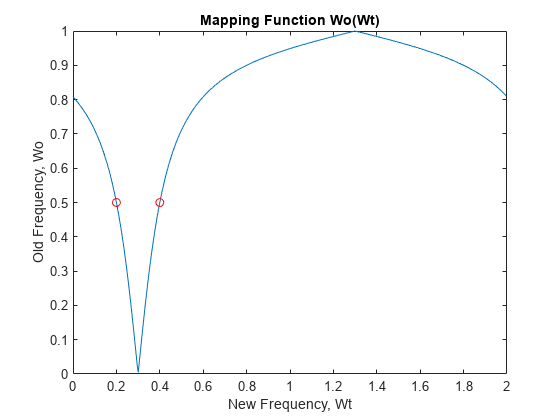Real lowpass to complex bandpass frequency transformation effectively
places one feature of the original filter, located at frequency
-Wo, at the required target frequency location,
Wt1, and the second feature, originally at
+Wo, at the new location,
Wt2. It is assumed that
Wt2 is greater than
Wt1.
Relative positions of other features of the original filter do not change in the target
filter. This means that it is possible to select two features of an original filter,
F1 and
F2, with
F1 preceding
F2. Feature
F1 will still precede
F2 after the transformation. However, the
distance between F1 and
F2 will not be the same before and after the
transformation.
Choice of the feature subject to the lowpass to bandpass transformation is not
restricted only to the cutoff frequency of an original lowpass filter. In general it is
possible to select any feature for example, the stopband edge, the DC, the deep minimum in
the stopband, or other ones.
Lowpass to bandpass transformation can also be used for transforming other types of
filters, for example, real notch filters or resonators can be doubled and positioned at two
distinct desired frequencies at any place around the unit circle forming a pair of complex
notches/resonators. This transformation can be used for designing bandpass filters for radio
receivers from the high-quality prototype lowpass filter.
